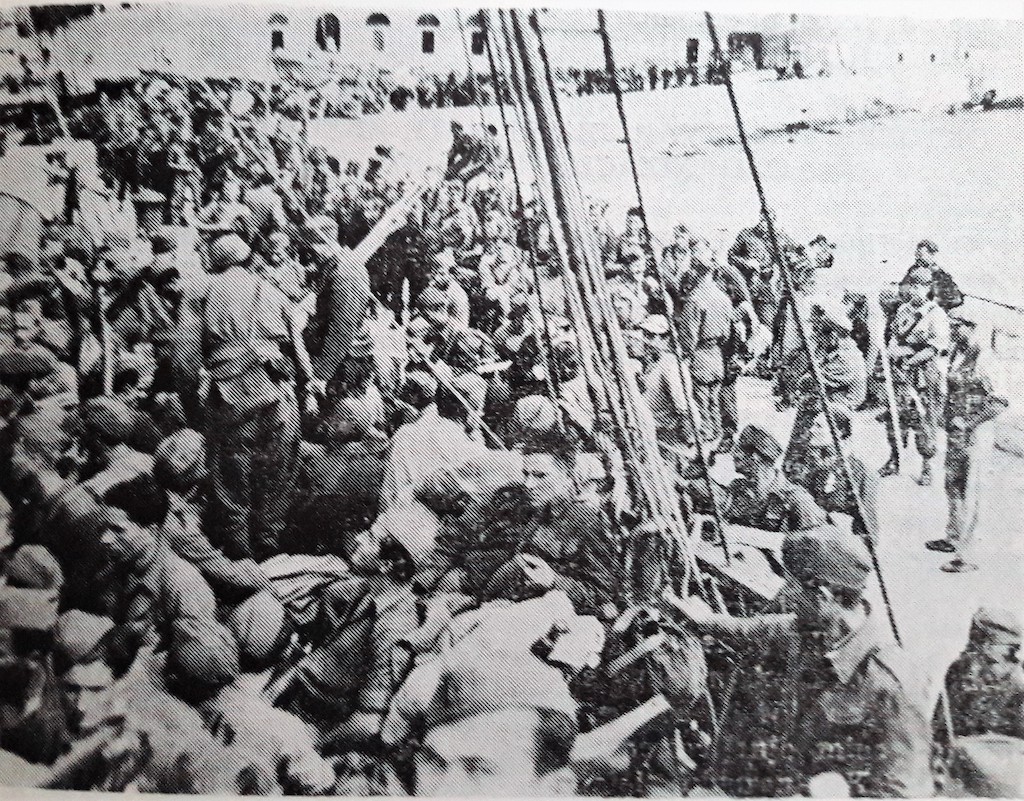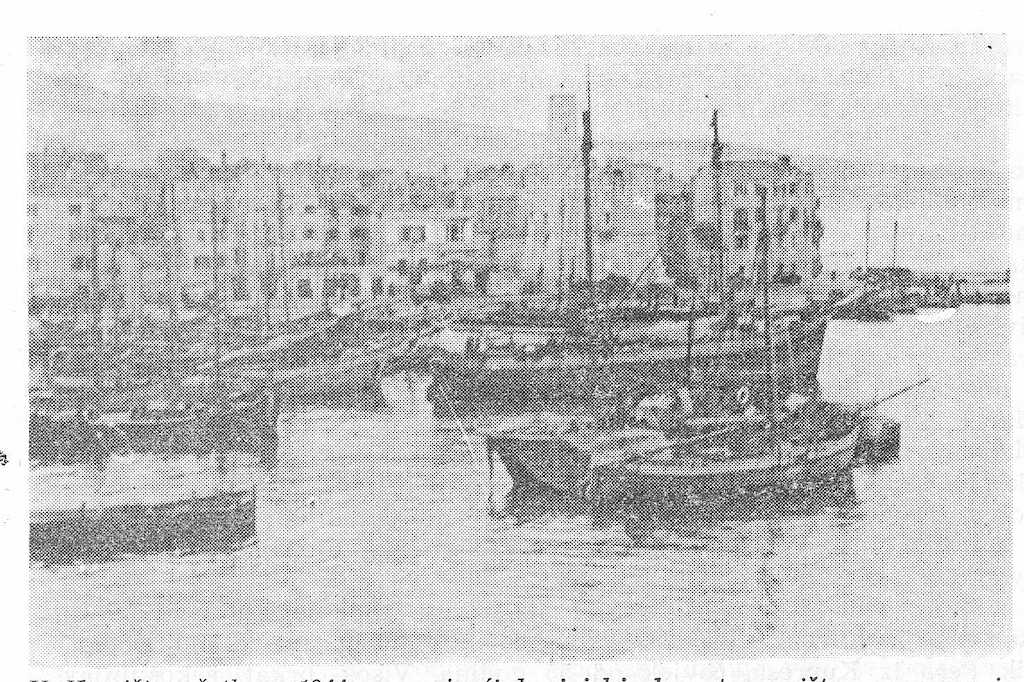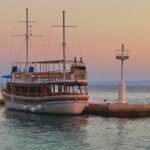May 21, 2019 – During the winter of 1943/44, following the Italian capitulation, the Germans mounted a ferocious offensive to keep control of the Adriatic coast and protect their southern flank from Allied attack. Encircling Tito’s main forces in Western Bosnia, they flooded into the Dalmatian coast. By 21 December they were on Korcula and by 19 January they were on Hvar. They had driven before them large numbers of refugees, mostly the very young and the elderly, swelling the islands’ population by more than 15,000, most of them on Hvar.
Fitzroy Maclean, SOE’s envoy to Tito, had persuaded Churchill to respond s to the Partisan leader’s request for assistance by deploying a large group of Royal Navy Commandos alongside US troops on Vis. It was clear to the Allies, though, that the refugees would have to be evacuated before serious fighting could ensue. Paul Bradbury’s for TCN article of Nov 2011 tells the story of the transport of thousands of refugees in severe hardship to Bari and thence to Egypt to the refugee camp at El Shatt. That freed the Allies to mount increasingly heavy raids on German island garrisons.

By May 1944, there were more than 10,000 troops on Vis, including Royal Marine Commandos 40 and 43, a Battalion of Highland Light Infantry, US Special Forces, and the Partisans’ 1st and 13th Dalmatian Brigades (including several hundred men and women from Hvar). An airstrip had been laid out to accommodate a flight of Hurricanes and Spitfires. The allied Commanders were indeed considering capturing Hvar and Brač to create a logistical “bridge” between Vis and the mainland.
Their planning was disrupted when the Germans suddenly struck a massive blow against Tito at his HQ in Drvar in Western Bosnia. At dawn on 25 May, five squadrons of Junkers bombers flattened the town, preceding an airborne attack by a full Battalion of SS Paratroopers. Simultaneously, the whole region was encircled by German and NDH troops. Tito escaped the immediate attack but still had to fight his way out of the wider trap that was being set. British SOE officers attached to his HQ radioed the news to Vis. Tito was demanding that all Partisan units attack the Germans wherever they could and pleaded for similar action from the British. On Vis, British and Partisan Commanders agreed on an immediate response: an amphibious attack on the island of Brač. It was to become the biggest Allied action in Yugoslavia during the entire war. The following is drawn from Commando records at the National Archives in Kew.
At 02.00 on 1 June, a Company of the Scottish were landed from Partisan schooners. They sailed round Hvar to Blaca cove on the South-West side of Brač. Their task was to eliminate an Observation Post on Vidova Gora, the highest point on the island, from which the Germans would have a clear view of the Allied landing zones along the south coast.
The Scots climbed up over the limestone ridges, each man carrying 60 lbs of weapons and supplies, and laid up for the rest of the day. At midnight, they attacked the German Observation Post. They came under heavy fire from concrete emplacements on which their mortar and stun gunfire had little effect. They cut the German telephone wires, fell back, reformed, and made a further determined attack, but were repulsed with heavy casualties. They had run into a barbed wire enclosure, heavily mined, surrounding the German position. All of their officers and ncos’s were either wounded or killed. Under heavy fire, they withdrew, making their way down the screen and winding tracks assisted by Partisan guides.
The main forces were landed unobserved at 00.30 on 2 June. 1,500 Partisans and 400 Commandos were landed at Blaca. The main task of this group was to destroy the German Command Post on a hilltop near Nerežišća in the centre of the island of Brač, overlooking their garrisons at Supetar on the north side and Sumartin at the eastern end of the island. Another 1,400 Partisans landed at Bol with the task of preventing the Germans from emerging from Sumartin. From dawn and throughout the day, the Partisans attacked Nerežišća, supported British artillery and air strikes by Spitfires from Vis. The Commandos joined the Partisan and made a more determined attack but failed to take their objective.
British Commandos carried out a further assault that night. Their leader was the eccentric Lieutenant Colonel Jack Churchill (no relation to the Prime Minister). Their attack was launched at 21.15 and pursued with great determination but after gaining part of the hill they were driven back. An hour later, Churchill led them on a further attack, playing his bagpipes as was his habit. They briefly took the German position but again the Germans reacted with mortar fire and counterattacked. Two troop leaders and a Lieutenant Colonel were killed. Churchill was wounded and taken prisoner with 35 of his men.

The German positions on the island consisted of an inner circle of rock and concrete linked by trenches and surrounded by minefields within barbed wire enclosures. They were killing zones. Nevertheless, the British had breached the barbed wire, crossed the minefields and engaged the enemy in their trenches until they ran out of ammunition. They then broke off, dragging their wounded with them. Evacuation began at 0600 that morning and a couple of hours later the surviving combatants were back on Vis.
The raid achieved its immediate objective. German forces were diverted from encircling Tito’s troops and the British got him out and flew him to Vis where he set up his headquarters. But a heavy price was paid. The British had lost their senior officers and nearly all their troop leaders, 16 men in all. Many of their 250 wounded would never fight again. The Partisans, who reported 130 Germans killed and 130 taken prisoners, lost 200. Moreover, there was no longer any need to establish a bridgehead to supply the Partisans on the mainland. The tide had turned. The biggest seaborne invasion in history was about to take place in Normandy, heralding the liberation of Europe from Nazi occupation and contributing to Allied victory on the Western Front.









